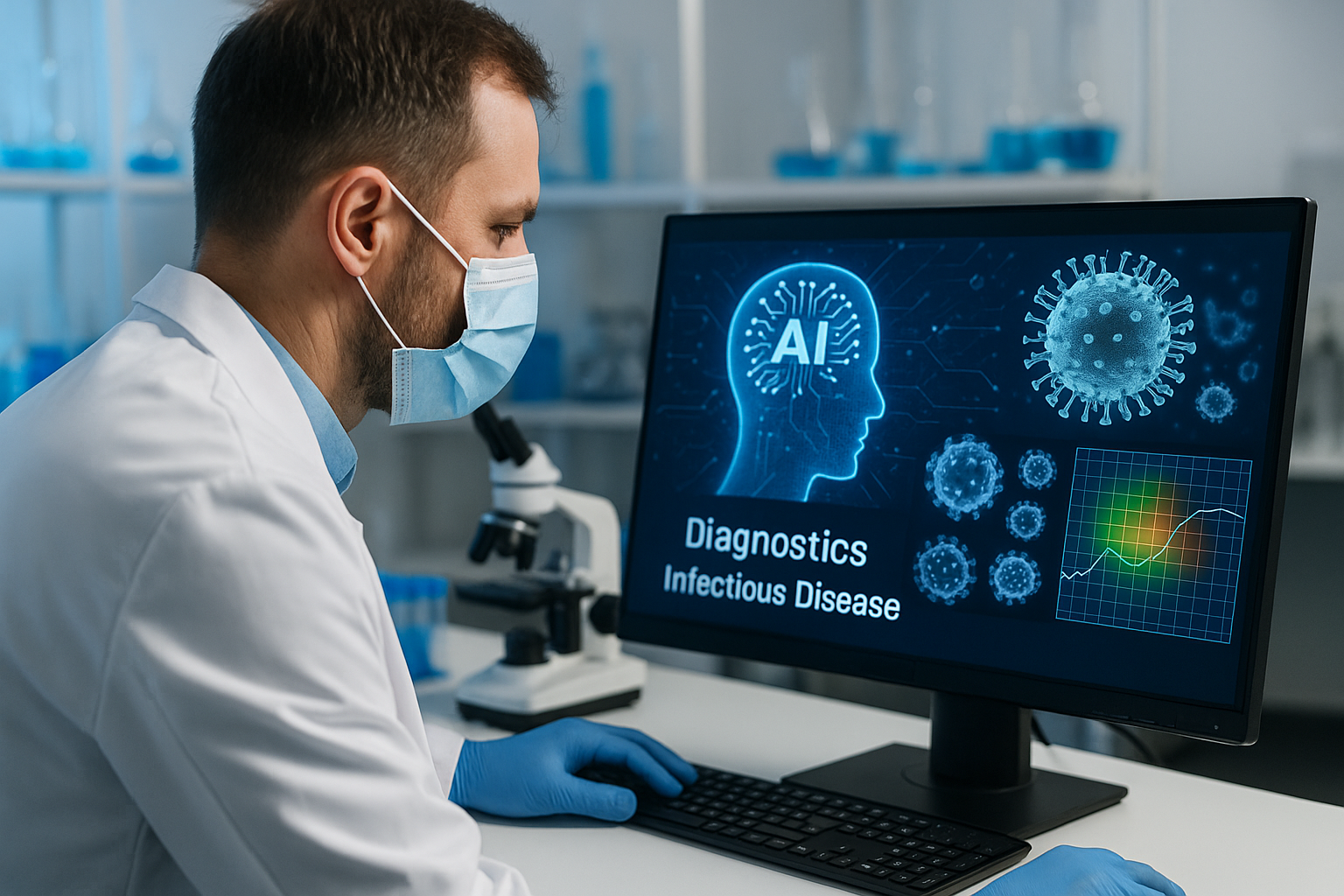How artificial intelligence is reshaping global infectious disease detection
During the COVID-19 pandemic, AI-assisted sequencing pipelines were instrumental in tracking SARS-CoV-2 variants, reconstructing outbreak dynamics, and supporting vaccine strategy development. The authors note that these same frameworks are now being repurposed for diseases such as avian influenza, Ebola, and tuberculosis.

Artificial intelligence is emerging as one of the most transformative technologies in modern medicine, reshaping how infectious diseases are detected, tracked, and managed across the world. A new study titled "Artificial Intelligence in Infectious Disease Diagnostic Technologies," published in Diagnostics, provides an in-depth analysis of how AI is redefining medical diagnostics, from early-stage detection to global outbreak surveillance, while exposing the systemic challenges that could limit its real-world potential.
The paper compiles evidence from 2018 to 2025, exploring AI's expanding role in genomic sequencing, diagnostic imaging, and point-of-care testing (POCT). The researchers highlight how deep learning, neural networks, and data-driven algorithms are enhancing the precision, speed, and reliability of infectious disease diagnostics, but caution that progress must be matched with ethical governance, standardized validation, and equitable access to technology.
AI takes the lead in pathogen detection and genomic surveillance
The study explores how artificial intelligence is now at the core of infectious disease detection, particularly in high-throughput sequencing (HTS). Machine learning models, including random forests, support vector machines, and deep neural networks, are enabling laboratories to process vast genomic datasets with unprecedented efficiency. These systems help identify pathogens, predict antimicrobial resistance, and map transmission routes far faster than conventional tools.
During the COVID-19 pandemic, AI-assisted sequencing pipelines were instrumental in tracking SARS-CoV-2 variants, reconstructing outbreak dynamics, and supporting vaccine strategy development. The authors note that these same frameworks are now being repurposed for diseases such as avian influenza, Ebola, and tuberculosis.
Despite these breakthroughs, challenges persist. The reliability of AI-driven sequencing is heavily dependent on data quality, labeling accuracy, and computational power. Limited access to standardized, high-quality datasets constrains global applicability, particularly in low-resource settings. The researchers emphasize that creating interoperable genomic databases and advancing federated learning models—where data remain local but algorithms are trained globally—could strengthen surveillance and minimize privacy concerns.
AI is also transforming imaging-based diagnostics, a critical area for diseases like malaria, tuberculosis, and COVID-19 pneumonia. Convolutional neural networks (CNNs) have achieved diagnostic accuracies exceeding 90 percent in automated malaria parasite recognition from blood smear images. Similarly, AI models analyzing CT and X-ray scans have proven capable of distinguishing COVID-19 from other respiratory conditions while quantifying infection severity in real time.
Still, the paper warns that differences in imaging hardware, scanning conditions, and data annotation practices limit cross-platform reliability. The authors call for unified imaging protocols and external validation standards to prevent biases and ensure reproducibility across healthcare systems.
From cell nuclei to handheld devices: AI extends diagnostic frontiers
One of the study's most forward-looking insights centers on Artificial Intelligence for Nuclear Analysis (AINU), an emerging diagnostic paradigm that uses AI and super-resolution microscopy to detect infection-induced morphological changes in cell nuclei before pathogens become clinically detectable. By identifying early cellular signatures of infection, AINU could enable pre-symptomatic diagnostics, representing a major leap forward in preventive medicine.
In parallel, the study highlights how AI is accelerating point-of-care testing (POCT) innovation. Deep learning algorithms now enhance portable diagnostic systems that can identify pathogens in minutes rather than hours. A CNN–LSTM hybrid model, known as TIME-SAVER, achieved 96 percent accuracy in rapid antigen testing for COVID-19 and influenza. Similarly, AI-integrated handheld devices demonstrated over 90 percent accuracy in field detection of tuberculosis and malaria.
These portable systems combine real-time image recognition, sensor data fusion, and wireless data transmission, allowing healthcare workers in remote regions to access diagnostic capabilities once confined to centralized laboratories. The authors argue that such tools could redefine infectious disease management in developing countries, provided that sustainable infrastructure, data connectivity, and training accompany their deployment.
The study also documents the growing influence of open-access biomedical datasets in training AI diagnostic models. Repositories like GISAID, NCBI GenBank, PATRIC, CodeBERT, and MIMIC-IV are now vital sources for genomic, bacterial, and clinical data. Similarly, open imaging datasets such as COVID-19 Radiography and NIH Malaria Dataset provide essential resources for validating AI models in real-world conditions. However, unequal access and inconsistent data labeling remain major obstacles to widespread model generalization.
Ethical, regulatory, and practical barriers to clinical integration
While the benefits of AI in infectious disease diagnostics are undeniable, the study warns that practical and ethical challenges could undermine global implementation if not addressed systematically. High development costs, limited interoperability, and fragmented regulatory standards remain major hurdles. The researchers note that many AI systems perform well in controlled research environments but fail to maintain accuracy and interpretability in real-world clinical settings.
Economic disparities further compound the issue. Many developing nations lack the technical capacity and financial resources to validate AI models or maintain the computational infrastructure required for continuous retraining. Moreover, the absence of globally recognized AI medical certification standards creates uncertainty for manufacturers and regulators alike.
Ethical concerns also take center stage in the study. As AI becomes more embedded in healthcare decision-making, issues surrounding data privacy, algorithmic transparency, and accountability have grown more pressing. The authors call for global cooperation to establish standardized frameworks for AI-driven diagnostics that ensure fairness and reliability while preventing misuse.
The paper outlines promising directions for overcoming these barriers. Self-supervised and federated learning techniques could enable AI systems to train collaboratively without sharing sensitive data. Explainable AI (XAI) models would make diagnostic outputs more interpretable to clinicians, fostering trust in AI-assisted decisions. The authors also advocate for lightweight, deployable AI architectures tailored to mobile and low-power devices, expanding accessibility in underserved regions.
- FIRST PUBLISHED IN:
- Devdiscourse









